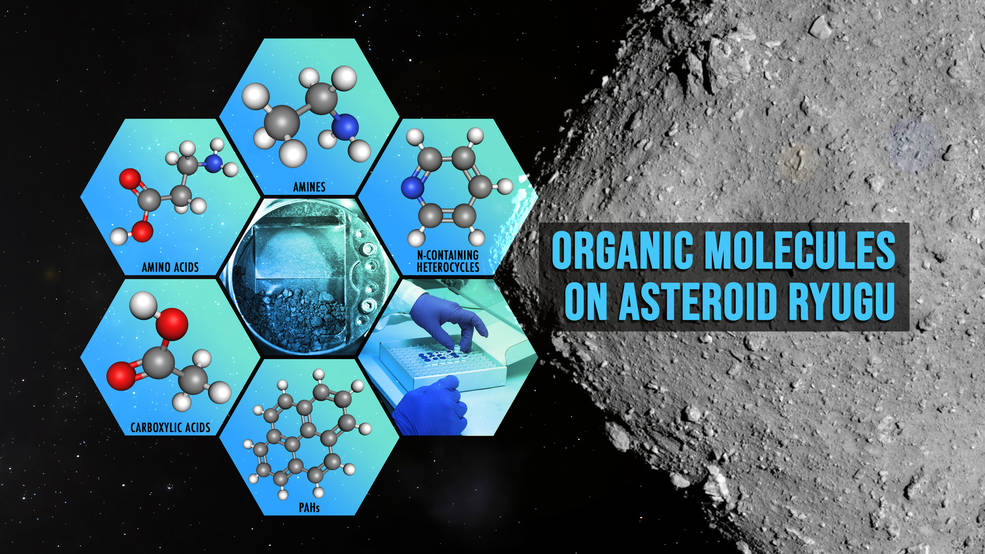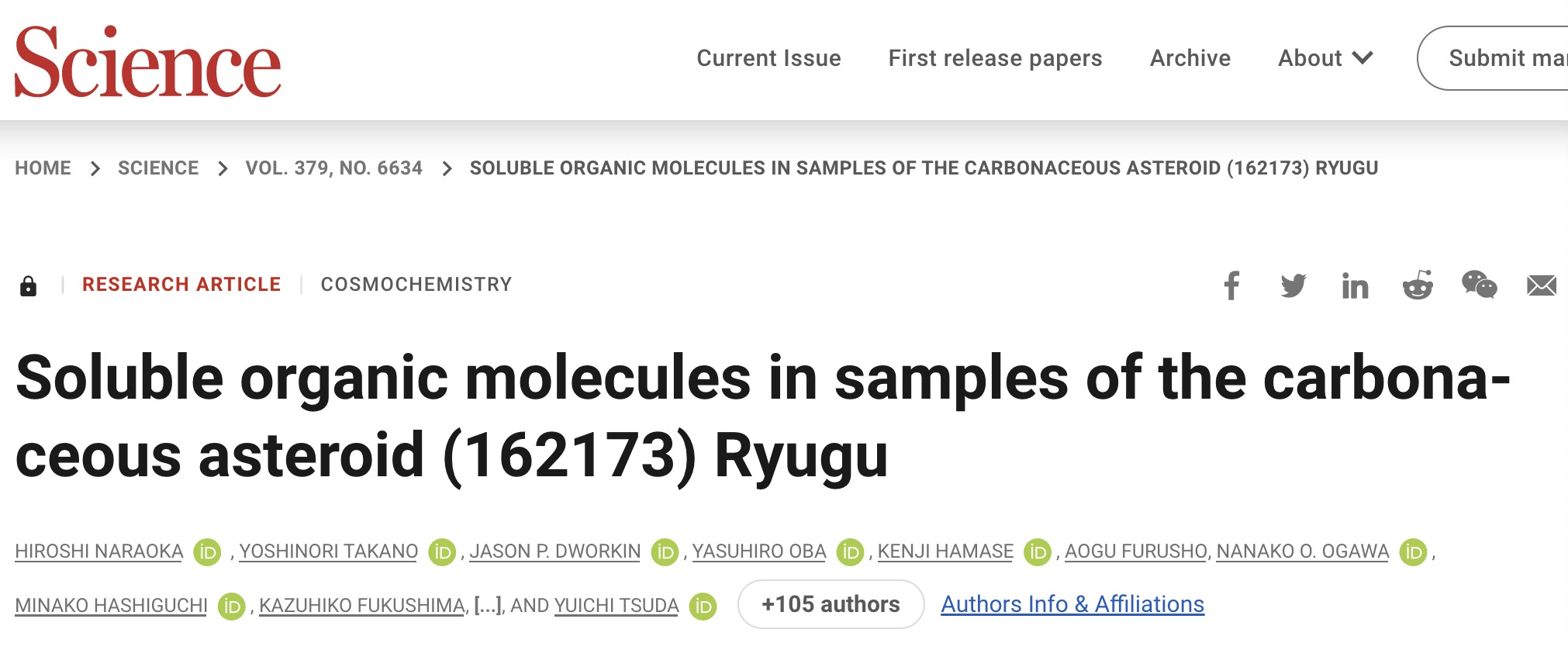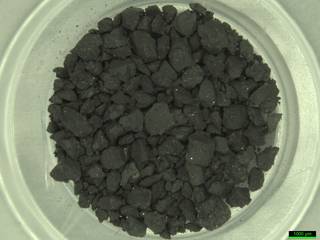
This conceptual image illustrates the types of organic molecules found in the sample of asteroid Ryugu collected by the Japan Aerospace Exploration Agency (JAXA) probe Hayabusa 2 spacecraft. /JAXA
This conceptual image illustrates the types of organic molecules found in the sample of asteroid Ryugu collected by the Japan Aerospace Exploration Agency (JAXA) probe Hayabusa 2 spacecraft. /JAXA
Samples from the Ryugu asteroid that were brought back by the Japan Aerospace Exploration Agency (JAXA) probe Hayabusa 2 spacecraft contain various organic molecules, according to recent paper published in the journal Science.
A Japanese, U.S. and European team, led by Professor Hiroshi Naraoka of Kyushu University's Department of Earth and Planetary Sciences, analyzed the Ryugu samples to identify 20 kinds of amino acids among about 20,000 kinds of organic molecules, including five kinds of amino acids that are the raw materials of proteins needed for life.
It is possible that such diverse organic matter was brought to the early Earth via asteroids like Ryugu, leading to the emergence of life, scientists said in the study published on February 24.

A screenshot of the study published in the journal Science.
A screenshot of the study published in the journal Science.
What are organic molecules?
Organic molecules are a wide range of compounds containing the element carbon coupled with hydrogen, oxygen, nitrogen, sulfur and other atoms. They are the building blocks of all forms of life here on Earth.
These compounds can be created by chemical reactions that don't involve living things, meaning that chemical processes within asteroids can create the ingredients for life.
The search for these chemical processes that could have led to the emergence of life on Earth is known as "prebiotic chemistry."
Also found in the Ryugu sample were organic prebiotic molecules that form in the presence of water, another vital ingredient for life, like aliphatic amines, carboxylic acids, polycyclic aromatic hydrocarbons, and nitrogen-containing heterocyclic compounds.
"So far, the amino acid results from Ryugu are mostly consistent with what has been seen in certain types of carbon-rich (carbonaceous) meteorites that have been exposed to the most water in space," research co-author and NASA Goddard Space Flight Center scientist Jason Dworkin said.

Aggregate sample of the Ryugu grains (A0106) allocated to the Hayabusa 2 Initial Analysis Soluble Organic Matter Team from the Japan Aerospace Exploration Agency for a variety of organic molecular analyses. /JAXA
Aggregate sample of the Ryugu grains (A0106) allocated to the Hayabusa 2 Initial Analysis Soluble Organic Matter Team from the Japan Aerospace Exploration Agency for a variety of organic molecular analyses. /JAXA
Possible source of life on Earth
The Ryugu sample contains several "prebiotic organics," including several types of amino acids that are used by living things to build proteins essential for regulating chemical reactions and forming structures like hair and muscles.
These molecules can also be created by various non-living processes, such as chemical reactions that can take place in asteroids.
The findings add more credibility to the theory that the basic ingredients needed to kickstart the development of life on Earth could have been delivered to the planet in its infancy from space.
Read More: Amino acids, origin of life, identified for first time outside Earth